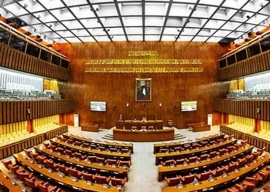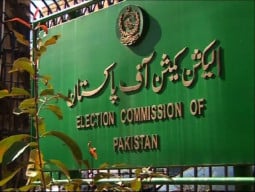
Liaquat Ali Khan did not disclose the name of the designers which would have explained that he was not the sole architect of the proposed national flag. Accrediting it to Ameeuddin Kidwai, a lawyer from the United Province, might have attracted controversy because of his involvement in the Khilafat movement in the past and other biases of the honourable members, irrespective of the existent political and religious divide in assembly. The objectors asked to defer the approval of the flag for one day and involve broader opinion through a representative committee. A religious division was evident in the debate because none of the Muslim members supported the due process question whereas all who called for it were Hindus. Distinctively, none of the latter was an entitled Nawab or Sir.
Liaquat Ali Khan rose again to argue the urgency to pass the national flag three days prior to independence, but also emphasised the meaning in the design; that the flag “will stand for freedom, liberty and equality … protect legitimate rights of every citizen … protect and defend the integrity of the State”. He pledged that “We will be a state that will maintain and help maintaining (sic) the peace throughout the world … (hence) this flag will be an emblem of peace”. He pledged further that “there will be no special privileges, no special rights for any particular community or any one particular interest”. In his third intervention, as obliged to do so, he said “…it is not the same flag as the Muslim League flag”. He rejected the idea that it was a religious flag “the moon and stars are … as much his property as mine”.
In his fourth rise the PM-designate said, “More than one-fourth flag is white (representing religious minorities) … (which) is made up of seven colours and thank God we have not got seven different minorities in Pakistan.” Upon hearing this, Bhim Sen Sachar from West Punjab remarked; “I hope you will not create them!”
The design was approved with a majority vote, later on accepted by all members. “We shall pay it proper respect and we shall be loyal to it,” concluded Kiran Sankar Roy. Albeit the amicable conclusion, the approval was reminiscent of a tendency among the ranks of the Muslim League — the fear of the minority or the remaining diversity had replaced the fear of majority domination. The defiance of respect for due participatory processes was to remain in governance practices and emergencies were always afoot as an excuse. In fact, the lack of respect for the former kept on generating more emergencies.
Yet, in all times, Pakistan’s flag enjoyed unconditional and ardent respect of the citizens, not because the principles therein became a living reality but because the higher ethos that it embodied had a universal appeal among the masses. Even though the remainder of the state’s business became discriminatory, the colours, their proportion and placement in the national flag transpired higher principles of acceptance, explicitly for religious minorities but also as recognition of the issue of marginalisation, which, in application, could be used to safeguard the interests of all minorities — racial, ethnic, linguistic and those belonging to other distinctions.
The white strip in the national emblem makes it mandatory for governments to not merely give the marginalised their due but create space for affirmative action i.e., measures that will address marginalisation and exclusion from the mainstream. The Constitutions, laws and policies may have been flawed and controversial while the aesthetics and meaning of the national flag have remained uncontested because of its foundational principles, though living up to them may still require hard work and strong will.
Published in The Express Tribune, August 18th, 2016.
Like Opinion & Editorial on Facebook, follow @ETOpEd on Twitter to receive all updates on all our daily pieces.




























1714129906-0/Clint-Eastwood-(1)1714129906-0-270x192.webp)






COMMENTS (2)
Comments are moderated and generally will be posted if they are on-topic and not abusive.
For more information, please see our Comments FAQ